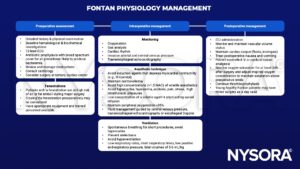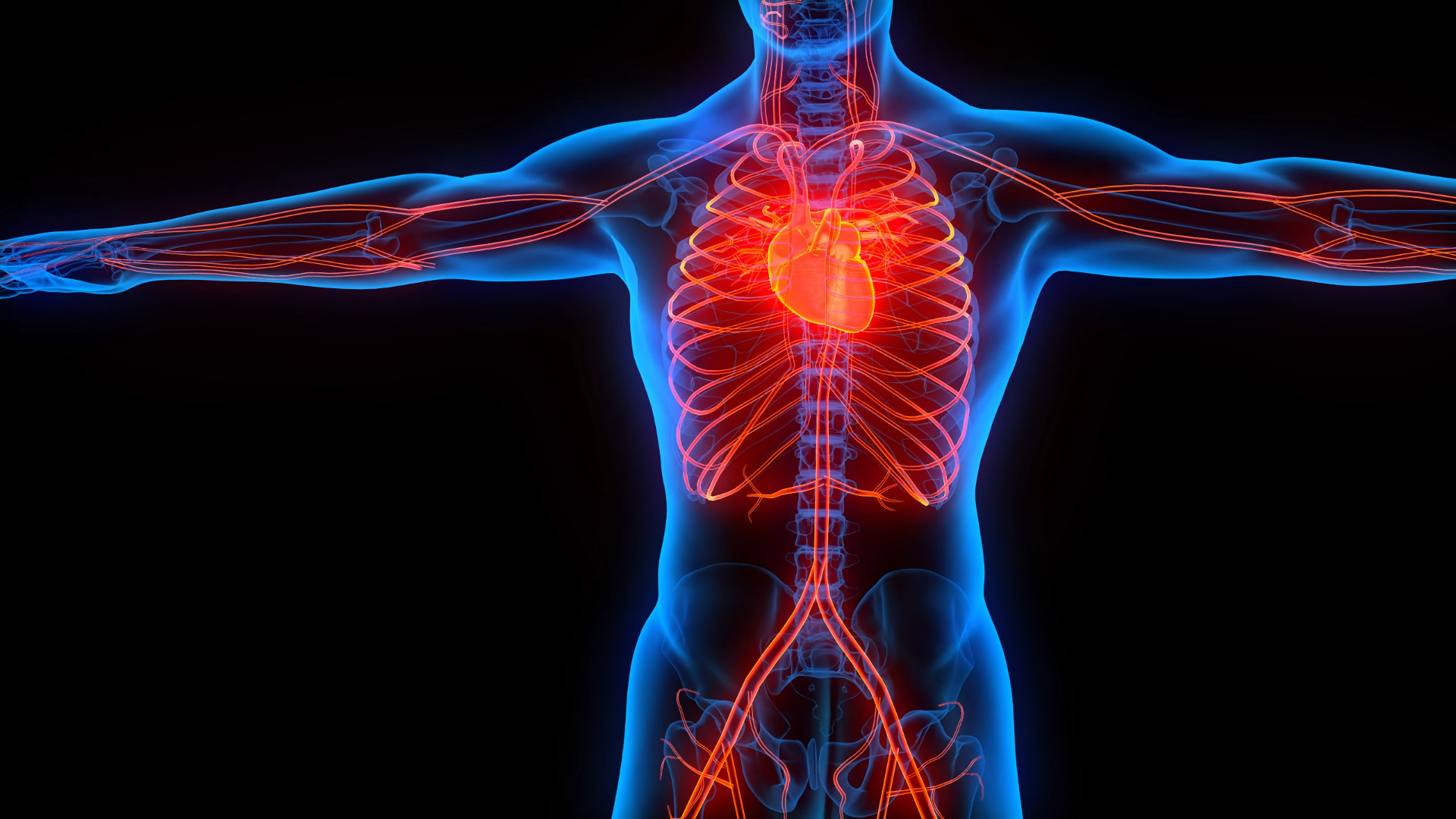Learning objectives
- Describe the Fontan procedure and its indications
- Manage patients with Fontan physiology
Background
- In a normal biventricular heart, the systemic and pulmonary circulations are in series and each circulation is supported by a ventricle
- In patients with single-ventricle congenital heart disease, the two circulations are in parallel
- These patients only survive because the systemic and pulmonary venous blood mix
- The Fontan operation is a palliative procedure that places the two circulations in series
- Selected patients should be in sinus rhythm, have a good ventricular function, and adequately sized pulmonary arteries
Technique
- Contraindicated in the neonatal period due to high pulmonary vascular resistance
- Staged approach to facilitate the progressive adaptation of the heart and lungs
- Stage 1: Systemic-pulmonary shunt
- Placement of a restrictive synthetic conduit between a major systemic central vessel and a proximal pulmonary artery
- Patients with hypoplastic left heart syndrome: Conduit placed between the right ventricle and the left pulmonary artery
- Stage 2: Superior cavopulmonary connection
- Bidirectional Glenn shunt or hemi-Fontan procedure
- Usually performed as soon as the pulmonary arteries have grown sufficiently to allow a low pulmonary vascular resistance (2-6 months)
- Cardiopulmonary bypass and ligation of the previous systemic-pulmonary shunt
- Stage 3: Completion
- Usually performed at 1-5 years of age
- Blood in the inferior vena cava is directed into the pulmonary circuit via an extracardiac conduit or via an intra-atrial baffle
- Stage 1: Systemic-pulmonary shunt
Complications
- Decreased exercise tolerance
- Ventricular dysfunction
- Arrhythmias
- Shunts
- Protein-losing enteropathy
- Developmental deficits
- Thromboembolism
Management

MAC, minimum alveolar concentration
Suggested reading
- Jolley M, Colan SD, Rhodes J, DiNardo J. Fontan Physiology Revisited. Anesthesia & Analgesia. 2015;121(1).
- Nayak S, Booker PD. The Fontan circulation. Continuing Education in Anaesthesia Critical Care & Pain. 2008;8(1):26-30.
We would love to hear from you. If you should detect any errors, email us [email protected]








